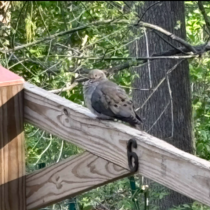
Logan Martin noticed that forsythia, a bright yellow flowering shrub that normally appears in early spring, were already blooming when he visited home in February.
Martin, a University of Maryland student who works for the school’s arboretum, is one of many Maryland and Montgomery County residents who have noticed plants popping up earlier than usual — a growing trend around the country as unprecedented, climate-change driven warmth causes fluctuations in spring arrival times.
Data points to a trend of earlier springs in Montgomery County and for much of the U.S. Last year in the county, leaves arrived about 10 days earlier than they did in 1981, according to a Washington Post data analysis. Maps from the National Phenology Network show a similar pattern for this spring.
“There’s a lot of concern that it’s not just that the springs are going to be earlier, but that they’re going to be very variable,” Martin said. “I’m not used to seeing things in bloom as early as they are.”
The start of spring is determined by the leaf out and bloom date of lilac and honeysuckle, which are among the first plants to pop up in the spring, according to the National Phenology Network.
The onset of spring varies by elevation and latitude, according to David Inouye, a professor emeritus at the University of Maryland who has researched flowering phenology, or the study of natural recurring events. Parts of Virginia, for example, have seen springs arrive more than 15 days early, while Midwestern states such as North Dakota have been hit by later springs of up to 14 days, according to data from the USA National Phenology Network.
Earlier spring arrivals come with increasing local temperatures. The average temperature in spring 2023 was warmer than normal almost everywhere in Maryland, with the statewide average temperature ranking in the top 25% of warmest recorded springs, according to the Maryland State Climatologist Office.
These changes in temperature and spring arrival dates have a range of effects on plants and wildlife, according to Matt Fitzpatrick, Associate Director for Research and professor at University of Maryland’s Center for Environmental Science.
Fitzpatrick said that it’s difficult to determine exactly what the long term effects are for Montgomery County because this is a relatively new phenomenon.
“These impacts can vary in complexity,” Fitzpatrick said. “We don’t have observations over long periods of time to know what what this might mean for natural systems.”
Barbara Collier, a member of the Bethesda Community Gardening Club, said the sprawling fig tree in her backyard has likely fared better because of the earlier, warmer temperatures. The tree will die all the way to the ground if it experiences a bad winter, but that hasn’t happened in years, she said.
Other plants are at risk if they blossom early and then are hit by a cold snap, Collier said. In particular, plants that are at the later stages of their bloom may face significant damage if they experience cooler temperatures, according to Collier.
“Climate change also brings us these sudden changes,” she said. “A sudden cold snap, even if it’s in the normal range, could have a bigger impact.”
Another effect of earlier, warmer springs could be a mismatch between flower blooms and pollinator arrival. Both flowers and some species of pollinators — such as honey bees and bumble bees — rely on temperature as an indicator of when to bloom and start pollinating, respectively. But other types of pollinators depend on factors such as daylength, which is unaffected by changes in spring arrival, Martin said.
These pollinators, which are called photoperiod sensitive, mean some flowers could be left without enough pollen if they bloom before the pollinators are foraging for food, Martin said.
Specialist bees — which have evolved a relationship with one or only a few plant species and make up about 25% of all bee species — could be particularly impacted by temperature fluctuations and pollinator-plant mismatch, according to Judy Fulton, Vice President of the Maryland Native Plant Society.
“The specialist bees are not going to be going to other flowers, so if they come out and their host plants aren’t blooming, they’re just out of luck,” Fulton said.
Another way Inouye knows springs have gotten earlier is through the progressive earlier dates of the cherry blossom peak bloom in Washington D.C. This year, pink and white blossoms dotted the nation’s capital by March 17 — the earliest date in 20 years. Between 2004 and 2023, the annual peak usually ranged from March 25 to April 10, according to the National Park Service.
The impacts of earlier springs, including earlier cherry blossom blooms, will continue to persist as climate change worsens, which is why it’s especially important to combat the human-caused phenomenon, Inouye said.
“It’ll continue on the same trajectory that it’s been and [springs are] going to continue to get earlier,” Inouye said. “If things don’t change, those problems are going to become worse and worse.”

